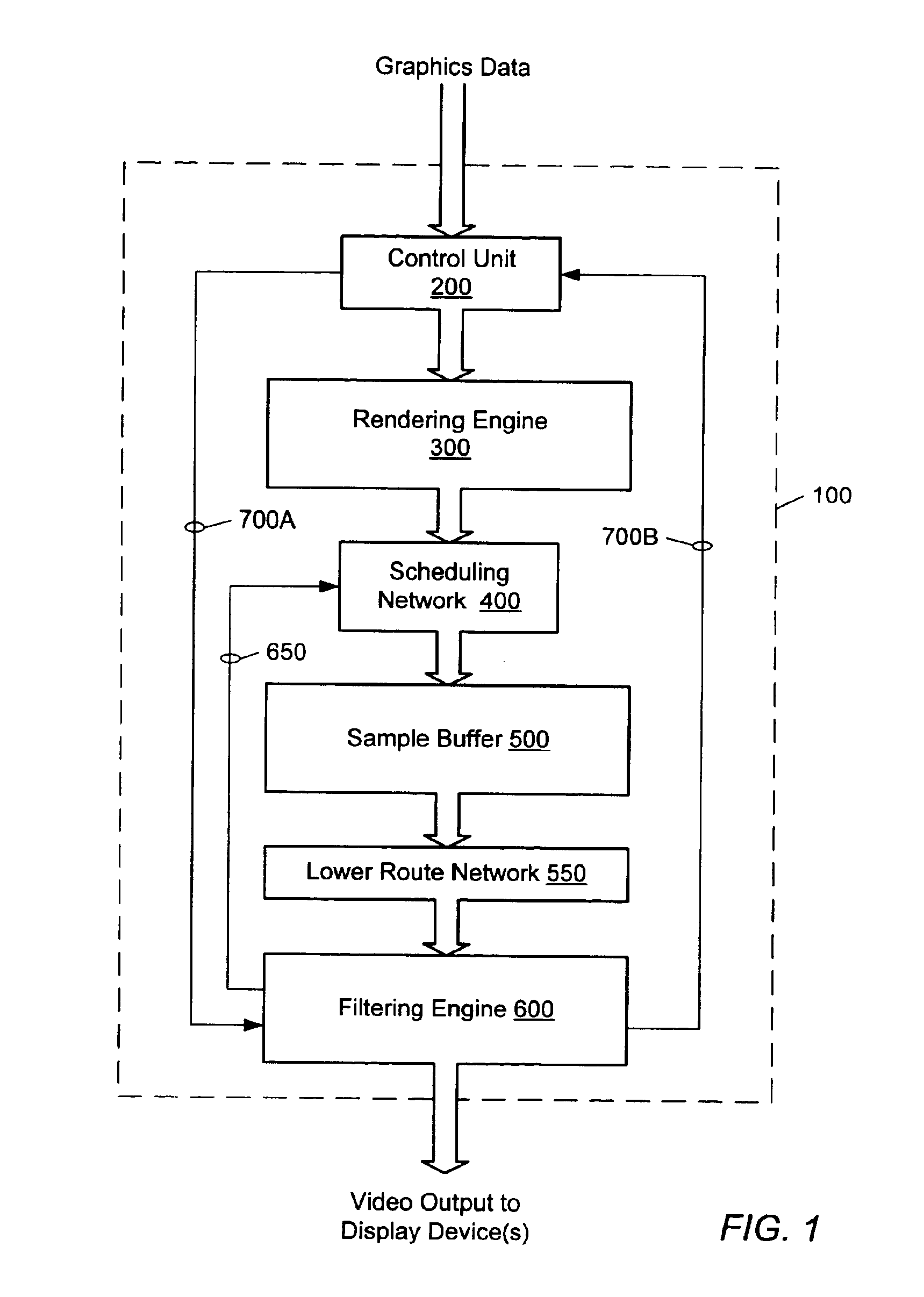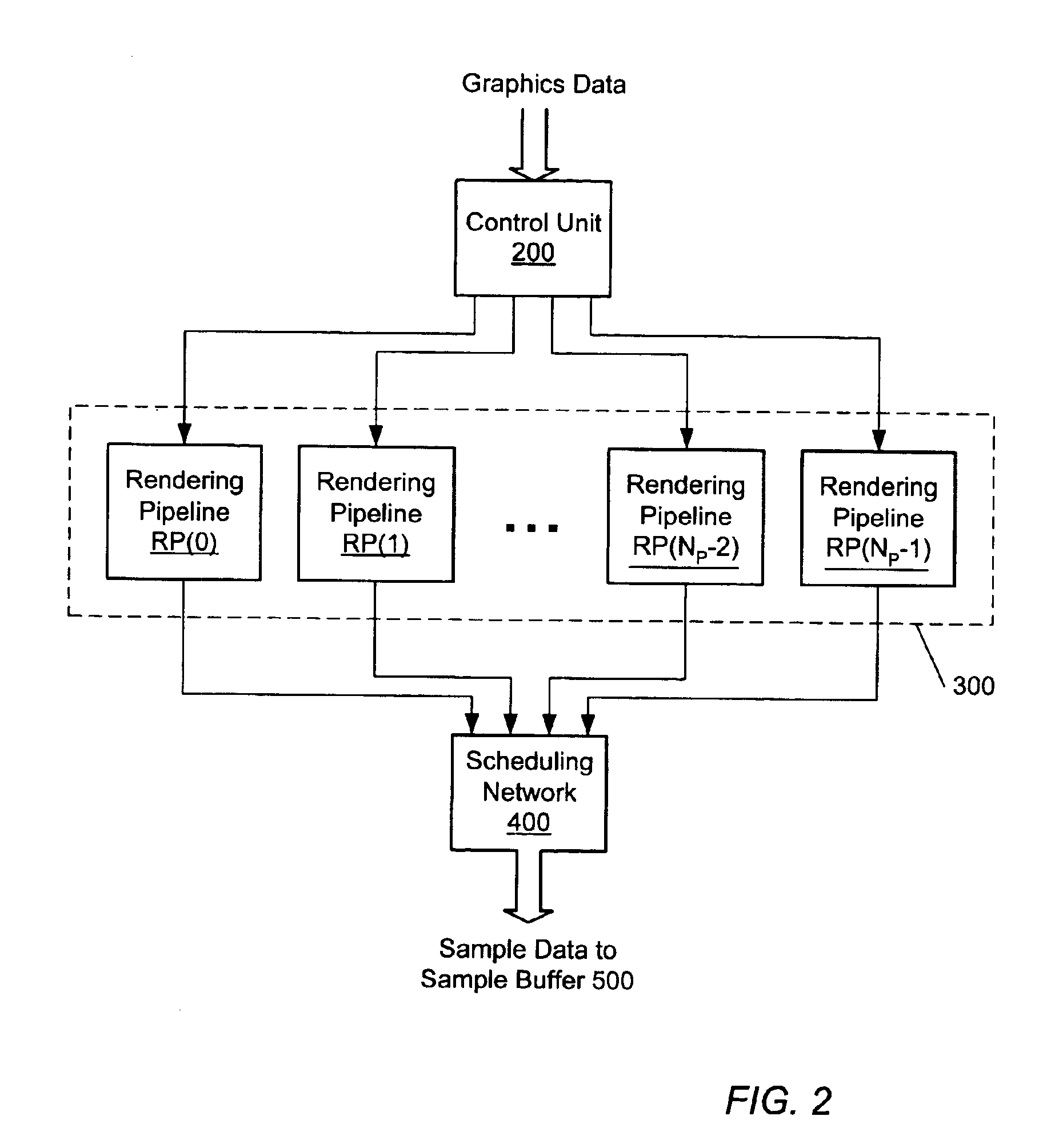Early primitive assembly and screen-space culling for multiple chip graphics system
a graphics system and chip technology, applied in the field of computer graphics, can solve the problems of reducing the amount of data transferred between chips and disrupting the efficiency of its processes
- Summary
- Abstract
- Description
- Claims
- Application Information
AI Technical Summary
Benefits of technology
Problems solved by technology
Method used
Image
Examples
Embodiment Construction
[0035]FIG. 1 illustrates one set of embodiments of a graphics accelerator 100 configured to perform graphics computations (especially 3D graphics computations). Graphics accelerator 100 may include a control unit 200, a rendering engine 300, a scheduling network 400, a sample buffer 500, a lower route network 550, and a filtering engine 600.
[0036]The rendering engine 300 may include a set of NPL rendering pipelines as suggested by FIG. 2, where NPL is a positive integer. The rendering pipelines, denoted as RP(0) through RP(NPL−1), are configured to operate in parallel. For example, in one embodiment, NPL equals four. In another embodiment, NPL=8.
[0037]The control unit 200 receives a stream of graphics data from an external source (e.g. from the system memory of a host computer), and controls the distribution of the graphics data to the rendering pipelines. The control unit 200 may divide the graphics data stream into NPL substreams, which flow to the NPL rendering pipelines respecti...
PUM
 Login to View More
Login to View More Abstract
Description
Claims
Application Information
 Login to View More
Login to View More - R&D
- Intellectual Property
- Life Sciences
- Materials
- Tech Scout
- Unparalleled Data Quality
- Higher Quality Content
- 60% Fewer Hallucinations
Browse by: Latest US Patents, China's latest patents, Technical Efficacy Thesaurus, Application Domain, Technology Topic, Popular Technical Reports.
© 2025 PatSnap. All rights reserved.Legal|Privacy policy|Modern Slavery Act Transparency Statement|Sitemap|About US| Contact US: help@patsnap.com



